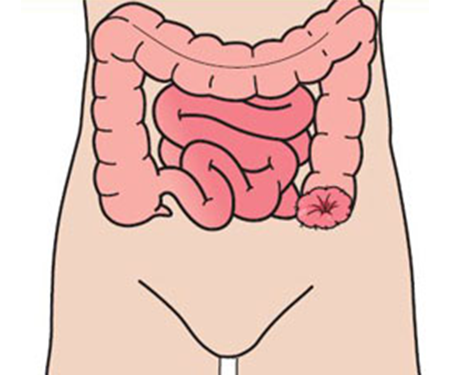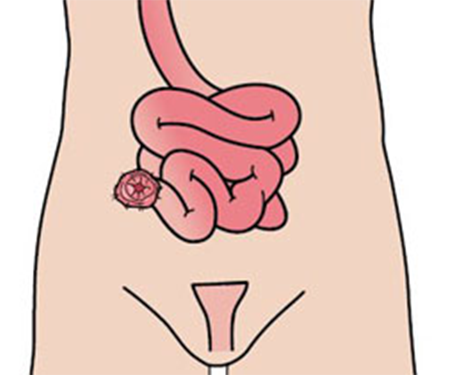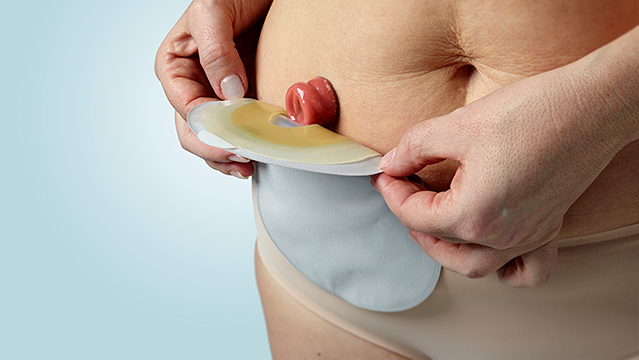
Preparing for ostomy surgery
Learn about stoma types and what to expect before surgery.
It's natural to have a lot of questions before stoma surgery. Having an operation is hard physically and can be an emotional experience. Being well prepared can help you to know what to expect.
This section covers questions many people have on ostomy surgery as well as providing information on support and community.
Learn about the types of stoma and the digestive and urinary system
What is a stoma?
A stoma is the result of an operation to remove disease such as cancer, Crohn's disease or diverticulitis - or from a bowel obstruction or injury to the digestive or urinary system. It is an artificial opening that allows faeces or urine either from the intestine or from the urinary tract to pass.
There are three main types of stoma related to the digestive and urinary system - these are: colostomy, ileostomy and urostomy.

Colostomy
In a colostomy operation, part of your colon is brought to the surface of your abdomen to form the stoma.

Ileostomy
In an ileostomy operation, a part of your small bowel called the ileum is brought to the surface of your abdomen to form the stoma.

Urostomy
If your bladder or urinary system is damaged or diseased and you are unable to pass urine normally, you may need a urinary diversion. This is called a urostomy, an ileal conduit or a Bricker bladder.
Why do I need to wear an ostomy pouch?
An ostomy pouch is necessary to securely and conveniently collect the output from your stoma. No matter what type of ostomy you have, all the output from the stoma must be collected in a secure and convenient way. That’s where your ostomy pouch comes in. These are designed to adhere to the skin on your abdomen around your stoma and collect the output.

Secure and discreet
The design of your ostomy pouch will depend on whether you have a colostomy, ileostomy or urostomy. Your stoma care nurse will show you which one is right for you, but the overwhelming majority of pouches are secure and discreet. Nobody will know you’re wearing one unless you decide to tell them.
Although it can be difficult at first to accept the fact that you will have to wear an ostomy pouch on your stomach, you should soon start to realise that it’s possible to live much as you did before.
Changing your pouch
How often you change or empty your pouch depends on the type of stoma you have:
- Colostomy: The pouch needs to be changed between one and three times a day, depending on the amount of output.
- Ileostomy: The pouch needs to be drained several times a day.
- Urostomy: The pouch needs to be drained several times a day. During the night, a urostomy bag or a small urostomy appliance can be attached to a night bag so you don’t need to get up to drain your bag.

What does a stoma look and feel like?
A stoma is usually moist and pinkish-red, and will stick out slightly from your abdomen.
After surgery, your stoma may be quite swollen to begin with, but will reduce in size over time – usually after six to eight weeks. No sensation, no pain.
A stoma is red in colour. This is because it is a mucous membrane, just like the mucous membrane inside your mouth. There is no sensation in the stoma, so it is not at all painful to touch. The stoma can bleed a little when being cleaned, especially in the beginning, but this is quite normal, and should stop shortly afterwards.
Stomas come in all different shapes and sizes - some are quite short and sit flat against the belly, while some protrude a little. Some people will have more than one stoma, depending on their condition.

What to expect after stoma surgery
Read more about what to expect after ostomy surgery and adjusting to life with your new stoma.

How can Coloplast Care make a difference for you?
- Reliable advice, whenever you need it
- Supplement the education and advice you get from your stoma care nurse
- Guidance on selecting the right products
- Easy access to samples of relevant products
- Free home visits by Coloplast Stoma Care nurses
Life with an ostomy isn't always straightforward. So why go it alone?
